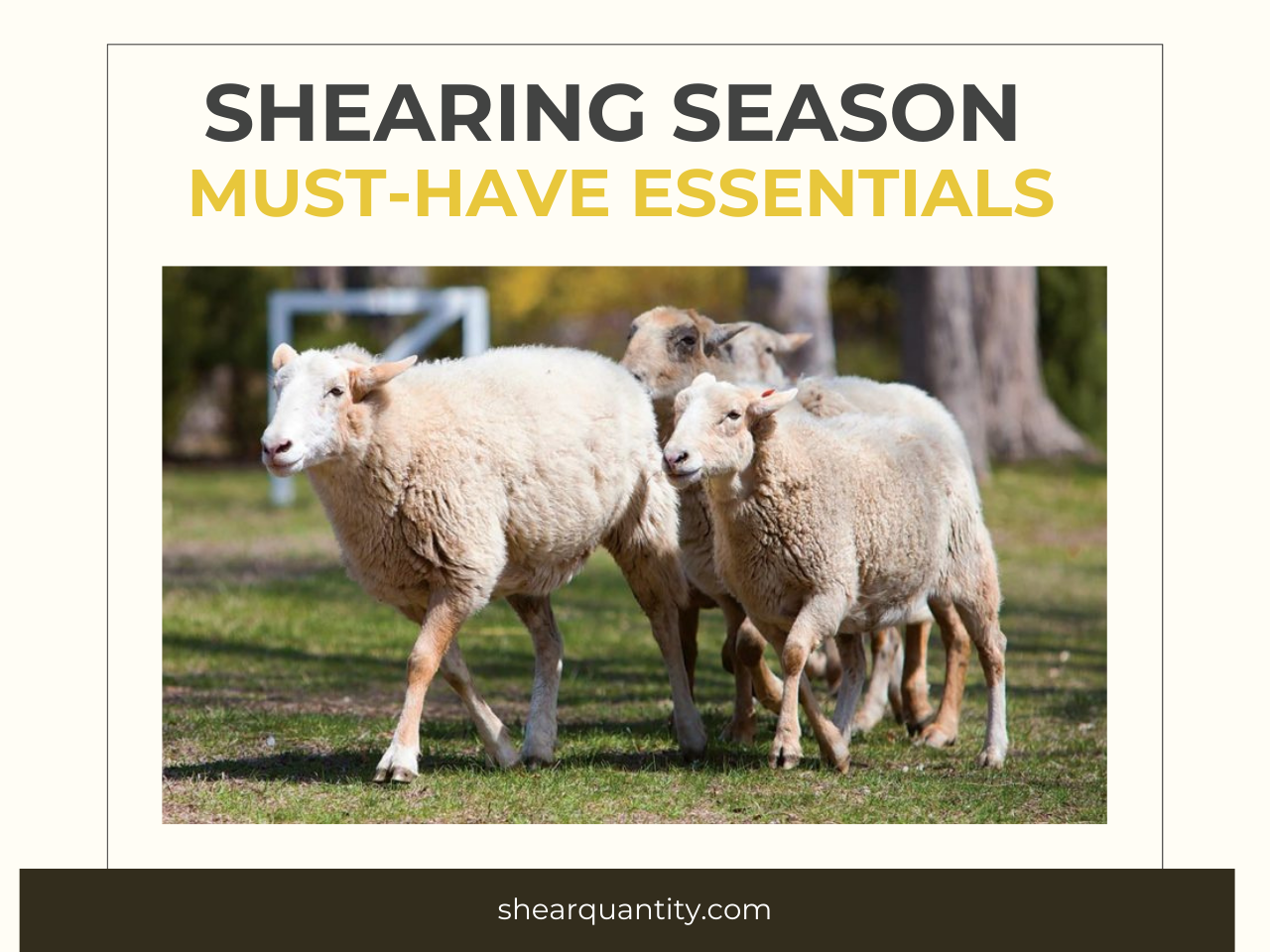
Sheep wearing a thick, heavy fleece often find it uncomfortable and stressful during warm summer months. In order to keep them cool during the summer season, professional shearers conduct the shearing process at least once every year. However, this practice serves multiple other purposes beyond just temperature regulation. This includes - improving animal welfare, reducing the risk of parasite infestation, enhancing reproductive performance, and so on.
Are you preparing for this sheep shearing season? Well, then it's time to consider the essentials required for a successful and efficient shearing process. Let’s take a closer look at what you’ll need.
1. Find the right shearing gear: The shearing process involves a handheld machine called an electric clipper featuring two sharp blades, a comb, and a cutter. It is a lightweight shearing component that can perform the task with precision and efficiency.
In a reliable store, you may come across a variety of shearing equipment. From scissors to clippers, blades, combs, and hand shears, you can explore a wide range of products at a one-stop destination. It is advisable to look for the right gear that suit your technique and budget and make an ideal purchase.
2. Prepare the shearing area: A clean and dry set-up is important for a safe and comfortable shearing process. What you should do? Remove the dirt and debris from the surface that could cause accidents and injuries. Also, ensure that the space is large enough so that both the shearer and the sheep are accommodated comfortably. Many professionals even choose non-slip shearing mats for a stable surface. You can even look for these accessories to attain a stress-free shearing experience.
3. Get the right clothing: Along with shearing gear, professionals also require appropriate clothing to stay comfortable and perform the task with proper grip. These involve - shearing singlets, jeans, gloves, boots, etc.
Shearing singlets are flexible enough for maximum movement. Durable and reinforced jeans protect the legs during the shearing process. Gloves are designed to protect the hands from cuts and abrasions while maintaining a good grip on shearing tools. Make sure you equip yourself with these clothing to ensure productive and safe shearing.
4. Be prepared for post-shearing care: Being a professional shearer, your responsibility doesn't end with removing the fleece from sheep. You should be ready for post-shearing care as well.
After completing the shearing process, inspect each sheep and find out whether there is any cut or injury. If so, apply an antiseptic to their wounds to prevent infection. Also, you should provide proper shelter to the sheared sheep as they are more vulnerable to cold weather and sunburn. Adequate shelter is needed until their fleece begins to grow back.
Summing Up
Sheep shearing is nothing new to farming. It is a common practice that usually begins during the late spring or early summer. Indeed, proper preparation is required to make the shearing process smoother, more efficient, and less stressful for both the animal and the shearer.
So, are you ready for a productive shearing season? ShearQuantity has a wide range of products available for this process. You can consider their high-quality shearing tools and accessories for optimal shearing performance. Visit our store today.


You must be logged in to post a comment.
click here to log in